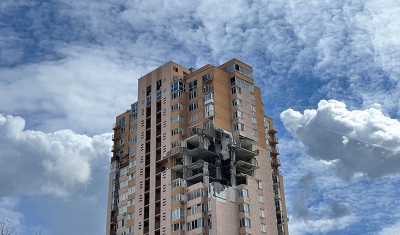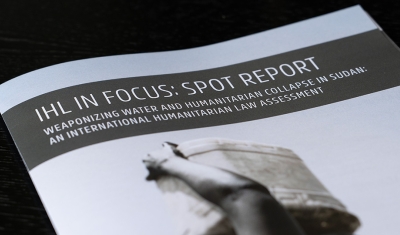Myanmar: A Battle for Recognition


MSF
4 December 2017
Our new publication Myanmar: A Battle for Recognition provides an overview of the subnational tensions and armed violence in the country and focuses on the latest developments and escalation of violence in Rakhine state where the Myanmar armed forces (Tatmadaw) are opposed to the Arakan Rohingya Salvation Army (ARSA).
Written by Laura Baron-Mendoza, it analyses the current non-international armed conflicts in Myanmar, as well as of the main actors involved in the violence: the Tatmadaw, armed non-state actors (ANSAs) affiliated to ethnic groups, or so-called ethnic armed organizations (EAOs), and militias, which are predominantly paramilitary armed actors responding either to EAOs or to the Tatmadaw.
This publication will form part, along with other analysis of conflict situations, of the War Report 2017 which will be published at the beginning of 2018.
‘As the UN Human Rights Council will hold a special session on the situation of human rights of the Rohingya and other minorities in Rakhine State on 5 December 2017, this publication is timely and useful as it recalls the non-international armed conflicts taking place in Myanmar, actors involved in these conflicts and recent developments in Northern Rakhine’ underlines Dr Annyssa Bellal, Strategic Adviser on International Humanitarian Law at the Geneva Academy and Editor of the War Report.
Territorial Claims and Violence Dating Back to the Colonial Period
With a vast ethnic and cultural diversity, as well as high levels of poverty, Myanmar has witnessed the emergence of a myriad of EAOs which have primarily pursued a high level of autonomy along with the recognition of identity and rights. These claims have been ongoing since before the colonial period, intensifying after independence in 1948 and still persist today where the central government opposes a plethora of EAOs located in specific regions.
Failure of the Nationwide Ceasefire Agreement
In 2015, the government of Aung San Suu Kyi achieved the signing of the Nationwide Ceasefire Agreement (NCA). However, the agreement left aside some of the largest EAOs after the government imposed restrictions for its signature, and its advancement towards implementation is slow. As a result, military action and armed clashes continue in various contested areas.
The Dynamics of the Violence in Rakhine State
Tensions in Rakhine state between the central government and the Muslim population, which self-identifies as Rohingya, date back to 1982 when the Burma Citizenship Law was enacted. This law enabled the revocation of Rohingya citizenship, therefore excluding the community from the 135 ethnic groups that were and still are recognized in Myanmar. Consequently, Rohingya referred to as Bengali and considered illegal immigrants from Bangladesh have since been severely persecuted.
Ethnic tensions have been marked, since 2012, by specific triggers that resulted in a severe military response against the Rohingya population, which has led to the destruction of private property, beatings, killings, rape, the suspension of humanitarian aid and a mass wave of migration to camps in Bangladesh’s Cox’s Bazar.

The Emergence of the Rohingya Insurgency in Northern Rakhine and Escalation of Violence
In response to the severe military crackdown against the Rohingya population, northern Rakhine saw the emergence in late 2016 of a newly organized resistance movement which calls itself Harakah al-Yaqin (HaY), meaning ‘faith movement’. Recently, HaY has started to use the English name Arakan Rohingya Salvation Army (ARSA).
Despite being a Muslim group, ARSA does not follow a jihadist agenda, has no religious targets and does not aim to impose Sharia law. In addition, there is no information about the presence of foreign fighters. Conversely, ARSA targets army forces, which are perceived as a threat to the community, and its stated prime purpose is to end of the persecution of Rohingya.
The first military operation conducted by ARSA on 9 October 2016 marked as shift in the region dynamics and a further escalation of violence. The Tatmadaw started using military helicopters to launch air strikes and the deployment of ground troops to surround and attack villages by means of arson. Recent attacks and subsequent responses at the end of August 2017 marked another escalation of violence.
‘While the Myanmar government has yet to ratify most international human rights treaties, the vast majority of alleged violations reported by the experts of the UN International Fact-Finding Mission on Myanmar infringe customary international law’ stresses Dr Annyssa Bellal.











